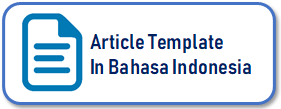The Correlation Between Personal Hygiene and Food Processing in Diarrhea Occurrences on Post-Earthquake And Liquefaction Toddlers In Refugee Camps Of Biromaru Public Health Center
DOI:
https://doi.org/10.22487/ghidza.v4i1.29Keywords:
Diarrhea, Personal Hygiene, Food ProcessingAbstract
Diarrhea can infect victims of disasters due to the poor sanitation and the unavailability of clean water facilities caused by disaster damage. Biromaru Public Health Center is the health center with the highest diarrhea cases in earthquakes and liquefaction disasters. The purpose of this study was to determine the relationship between personal hygiene and food processing on the incidence of diarrheal diseases in post-disaster toddlers in the evacuation area of Biromaru Public Health Center. This research is analytic observational. Samples in the study were 130 respondents, taken using the proportional stratified random sampling method. Data were analyzed using univariate and bivariate analysis with a chi-square test using ɑ = 5%. Chi-square test results showed hand washing with soap habits (ρ = 0,000), nail hygiene (ρ = 0,000) and food processing (ρ = 0,000). The conclusion of this study there is a relationship between hand washing with soap habits with the incidence of toddler diarrhea in the refugee working area of the Biromaru Public Health Center, there is a relationship between nail hygiene with the incidence of toddler diarrhea in the refugee working area of the Biromaru Public Health Center, and there is a relationship between food processing and the incidence of toddler diarrhea in the refugee working area of the Biromaru Public Health Center. We expected mothers/caregivers of toddlers to take hand washing with soap actions, maintain nail hygiene, and process food properly
Downloads
References
Acikel, C. H., Ogur, R., Yaren, H., Gocgeldi, E., Ucar, M., & Kir, T. (2008). The hygiene training of food handlers at a teaching hospital. Food Control, 19(2), 186–190. https://doi.org/10.1016/j.foodcont.2007.03.008
Akabanda, F., Hlortsi, E. H., & Owusu-Kwarteng, J. (2017). Food safety knowledge, attitudes and practices of institutional food-handlers in Ghana. BMC Public Health, 17(1), 40. https://doi.org/10.1186/s12889-016-3986-9
Alebel, A., Tesema, C., Temesgen, B., Gebrie, A., Petrucka, P., & Kibret, G. D. (2018). Prevalence and determinants of diarrhea among under-five children in Ethiopia: A systematic review and meta-analysis. PLOS ONE, 13(6), 1–20. https://doi.org/10.1371/journal.pone.0199684
Biswas, A. B., Roy, A. K., Das, K. K., Sen, A. K., & Biswas, R. (1990). A study of the impact of health education inparted to school children on their knowledge, attitude and practice in regard to personal hygiene. Indian Journal of Public Health, 34(2), 87–92.
Chidziwisano, K., Slekiene, J., Kumwenda, S., Mosler, H.-J., & Morse, T. (2019). Toward Complementary Food Hygiene Practices among Child Caregivers in Rural Malawi. The American Journal of Tropical Medicine and Hygiene, 101(2), 294–303.
Ferllando, H. T., & Asfawi, S. (2015). Hubungan Antara Sanitasi Lingkungan dan Personal Hygiene Ibu Dengan Kejadian Diare Pada Balita Di Wilayah Kerja Puskesmas Mangkang. VISIKES: Jurnal Kesehatan Masyarakat, 14(2).
Irianto, K. (2014). Epidemiologi penyakit menular dan tidak menular panduan klinis. Bandung: Alfabeta, 61–96.
Kamau, N., & Njiru, H. (2018). Water, Sanitation and Hygiene Situation in Kenya’s Urban Slums. Journal of Health Care for the Poor and Underserved, 29(1), 321–336.
Khatoon, R., Sachan, B., Khan, M. A., & Srivastava, J. P. (2017). Impact of school health education program on personal hygiene among school children of Lucknow district. Journal of Family Medicine and Primary Care, 6(1), 97.
Kurniawan, R. (2019). Profil kesehatan Indonesia tahun 2018. Kementerian Kesehatan RI.
LESTARI, D. (2017). Hubungan Antara Pengetahuan Tentang Diare, Penggunaan Jamban Sehat Dan Kebiasaan Mencuci Tangan Menggunakan Sabun Dengan Kejadian Diare Pada Anak Usia Sekolah. Universitas Muhammadiyah Purwokerto.
Meliyanti, F. (2016). Faktor-faktor yang berhubungan dengan kejadian diare pada balita. Jurnal Aisyah: Jurnal Ilmu Kesehatan, 1(2), Hal-09.
Murray, C., & Newby, H. (2012). Data resource profile: United Nations children’s fund (UNICEF). International Journal of Epidemiology, 41(6), 1595–1601.
Nita, N. A. (2016). Hubungan Antara Personal Hygiene Dengan Kejadian Diare Pada Siswa Sdn Batursari 5 Mranggen Tahun 2016. Semarang: Fakultas Kesehatan Universitas Dian Nuswantoro. Tersedia Dari Url: Http://Mahasiswa. Dinus. Ac. Id/Docs/Skripsi/Lengkap/18694. Pdf (Diakses Tanggal 9 Februari 2018).
Oza, S., Lawn, J. E., Hogan, D. R., Mathers, C., & Cousens, S. N. (2014). Neonatal cause-of-death estimates for the early and late neonatal periods for 194 countries: 2000–2013. Bulletin of the World Health Organization, 93, 19–28.
Purnama, T. B., Alkaff, R. N., & Agustina, D. (2020). Analisis Time-Series Kasus Diare Pasca Bencana Gempa Bumi dan Likuifaksi di Kabupaten Sigi, Sulawesi Tengah.
PUSKESMAS Biromaru. (2018). Laporan Kasus Diare.
Satria, A. T., & Indah, S. (2016). Hubungan Kondisi Air Minum, Tingkatan Asupan Nutrisi Dan Personal Hygiene Dengan Kejadian Diare Pada Balita Usia 1-5 Tahun Di Klinik Melati Husada Purwodadi Kabupaten Malang. Biomed Science, 4(1), 30–36.
Trikora, E., & Siwiendrayanti, A. (2015). Hubungan Praktik Cuci Tangan, Kriteria Pemilihan Warung Makan Langganan dan Sanitasi Warung dengan Kejadian Diare pada Mahasiswa Universitas Negeri Semarang. Unnes Journal of Public Health, 4(1).
Yusniar Hanani, D. (2015). Hubungan Jenis Sumber Air, Kualitas Bakteriologis Air, Personal Hygiene dengan Kejadian Diare pada Balita di Wilayah Kerja Puskesmas Lamper Tengah Semarang. Diponegoro University
Downloads
Published
Issue
Section
License
Ghidza: Jurnal Gizi dan Kesehatan is licensed under a Creative Commons Attribution-Share Alike 4.0 International License
All articles published Open Access are free for everyone to read and download. Under the CC-BY-SA license, authors retain ownership of the copyright for their article, but authors grant others permission to use the content of publications in Ghidza: Jurnal Gizi dan Kesehatan in whole or in part provided that the original work is properly cited.
Users (redistributors) of Ghidza: Jurnal Gizi dan Kesehatan are required to cite the original source, including the author's names, Ghidza: Jurnal Gizi dan Kesehatan as the initial source of publication, year of publication, and volume number.














.png)

.png)
1.png)



